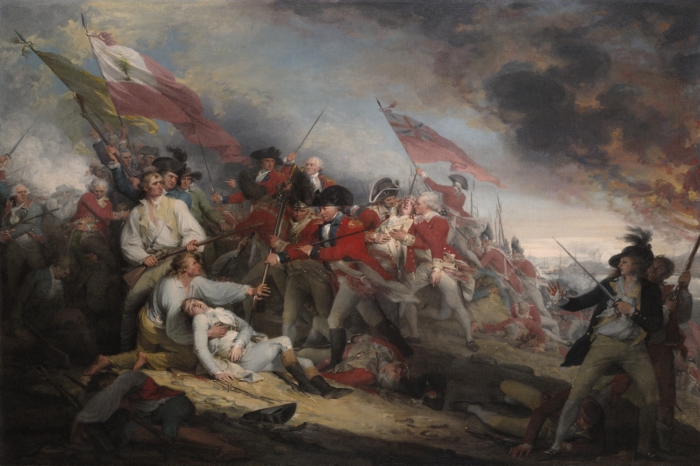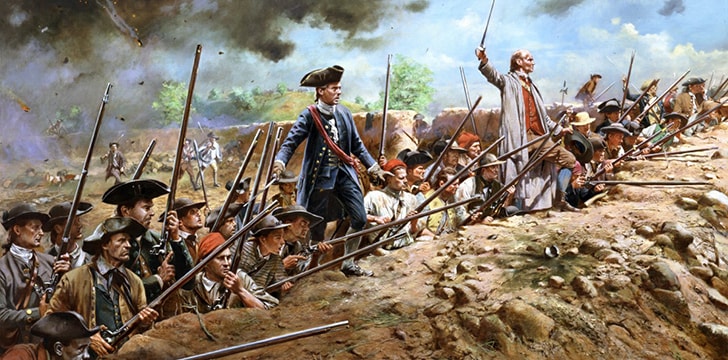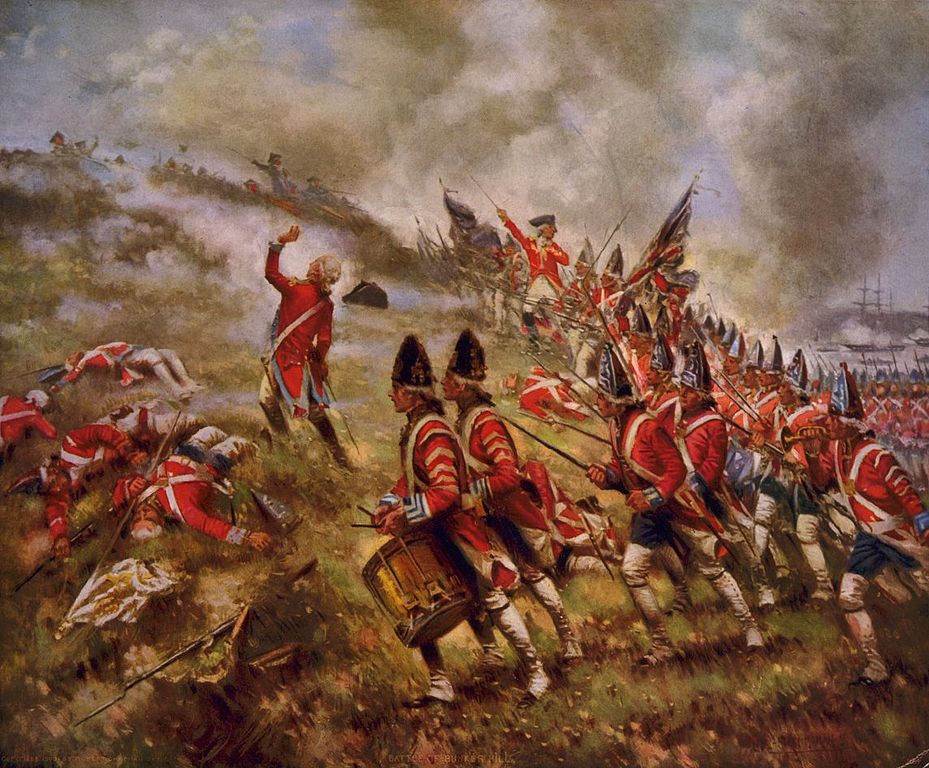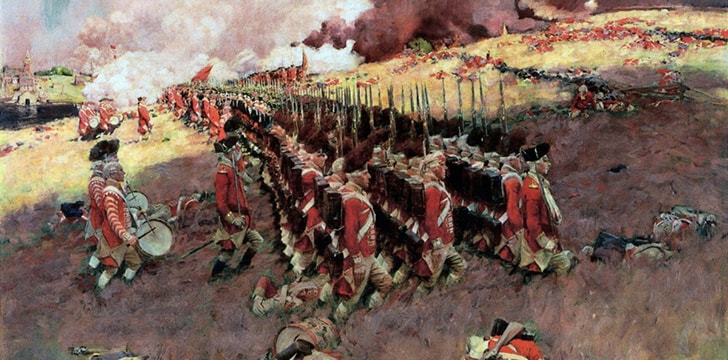It was not easy for the United States to become the country as we know it today. The bloody battles were part of the process of establishing the United States as an independent nation.
The American colonies faced obstacles from the British Empire, which were far superior to them.
One of these obstacles led to the Battle of Bunker Hill, during which British troops and the colonial army fought to gain control of the peninsula in Charleston, Massachusetts.
To explain the events leading up to the battle and describe the battle itself, here are 10 detailed facts about the Battle of Bunker Hill.
Facts About The Battle of Bunker Hill
10. Nearby Hills Of Boston On June 17, 1775

When colonial forces surrounded Boston, they received information about possible troops from the British side to the adjacent hill, called Bunker Hill.
The colonial army sent its 1,500 men to strengthen the area in order to stop British threats.
9. William Prescott Commanded The Battle Of Bunker Hill
William Prescott reportedly told his troops, “Don’t shoot until you see the whites of their eyes.” He wanted his army to kill the enemy at close range so shots could become more lethal.
Using this strategy, Prescott also wanted to use a limited supply of ammunition more efficiently. This strategy worked effectively until the colonial forces ran out of ammunition.
8. The Inexperienced Militia Could Stand Up Against Experienced Troops

The British claimed a victory, but at great cost. British casualties were significantly higher. Some 1,150 soldiers out of 2,400 British soldiers were killed or wounded, while US colonial forces got away with 450 wounded and dead soldiers.
Furthermore, the British Army lost its valuable officers. Although the colonial army could not control the area against British forces, it could discourage the British from carrying out more frontal attacks in the future.
7. The Battle Is Called “the Battle Of Bunker Hill”
Colonial militias originally planned to build a fort on Bunker Hill; however, they passed the hill in the dark and chose Breed’s Hill. Breed’s Hill was much smaller but closer to the British positions.
The choice of Breed’s Hill was considered by some historians to be not militarily strategic, but much more threatening to the British who were about to attack.
6. British Troops Outnumbered The Colonial Army

Some 2,400 British soldiers marched against 1,500 colonial militias under the command of General William Howe.
Some historians believe that it was General Howe’s bad judgment that caused a large number of casualties on the British side.
He could easily surround colonists from the sea using mighty British ships. Instead, he ordered the soldiers to march uphill, hoping that the Americans would withdraw.
However, the Americans showed unexpected resistance. They could stop two waves of British attacks until they ran out of ammunition and engaged in hand to hand battles during the third wave.
5. Only Half Of The Fort Was Built When British Troops Attacked

Colonial troops were only able to complete half the fort when British troops began firing cannonballs at 5 a.m. Their lack of preparation was described in a letter from a legalistic soldier to his mother.
Peter Brown, the soldier who wrote the letter, described to his mother how insecure the soldiers in the half-finished fort.
4. The King Of Great Britain George III
The proclamation of the rebellion was the strict message of the British Empire that the rebellion of the American colonies will be treated as a treacherous act.
Therefore, these actions would be punishable by law.
Through the proclamation, George III ordered the authorities of the British Empire to “do everything possible to resist and suppress such rebellion.”
3. British Troops Were Called Redcoats During The Battle
In some historical documents, British soldiers were described as redcoats because of the uniforms they wore during battles. But why did the British Empire have red as their military color?
There are several theories: a red tint was cheaper than blue and yellow, and red is highly visible during smoke battles.
Unlike British troops, American loyalists fought in their civilian clothes.
2. The Weapons Used By American Soldiers Were Inferior To What British Soldiers Used

Each British soldier was equipped with muskets and bayonets.
The Americans also had muskets, but some soldiers used other available weapons instead of bayonets.
1. Black Soldiers Also Fought In The Battle At Bunker Hill
According to the African American Registry, 103 Blacks and Native Americans joined the colonial forces to fight against British troops.
Two black soldiers among them were redeemed as heroes. They were Salem Poor and Peter Salem.
Salem Poor was an African American slave who bought his freedom for £ 27 and joined the colonial army.
Peter Salem, however, was released by his teacher, Major Lawson Buckminster, so that Peter could join the army and serve.
Some historical records indicate that it was Peter Salem who killed British Navy Commander John Pitcairn.









